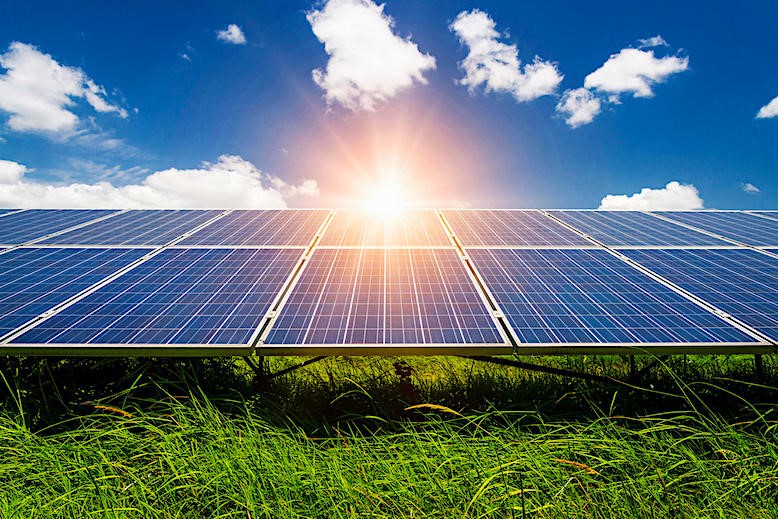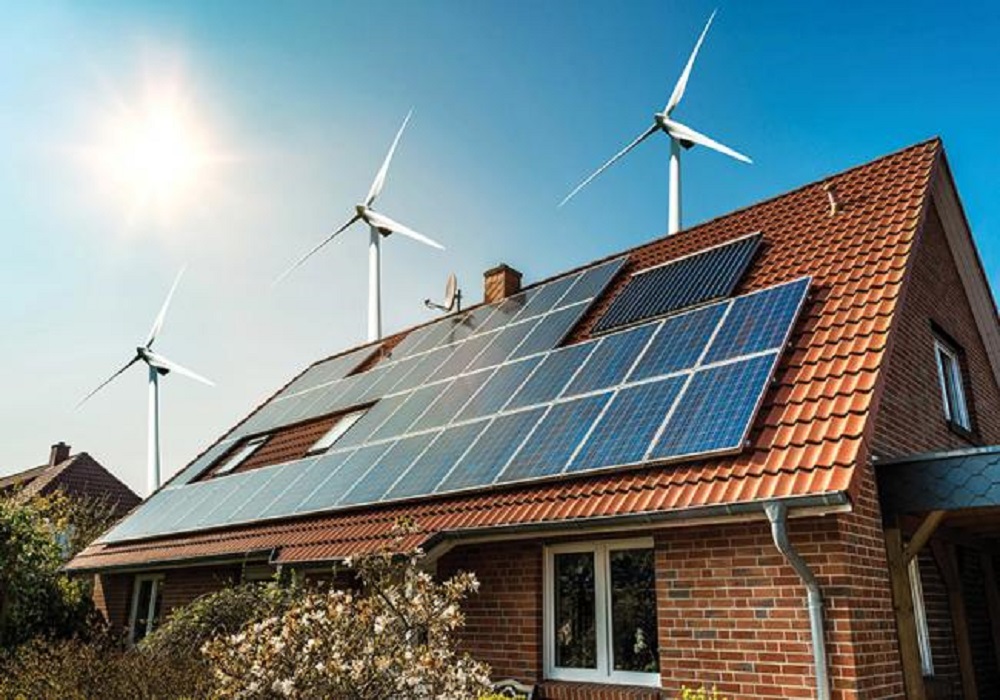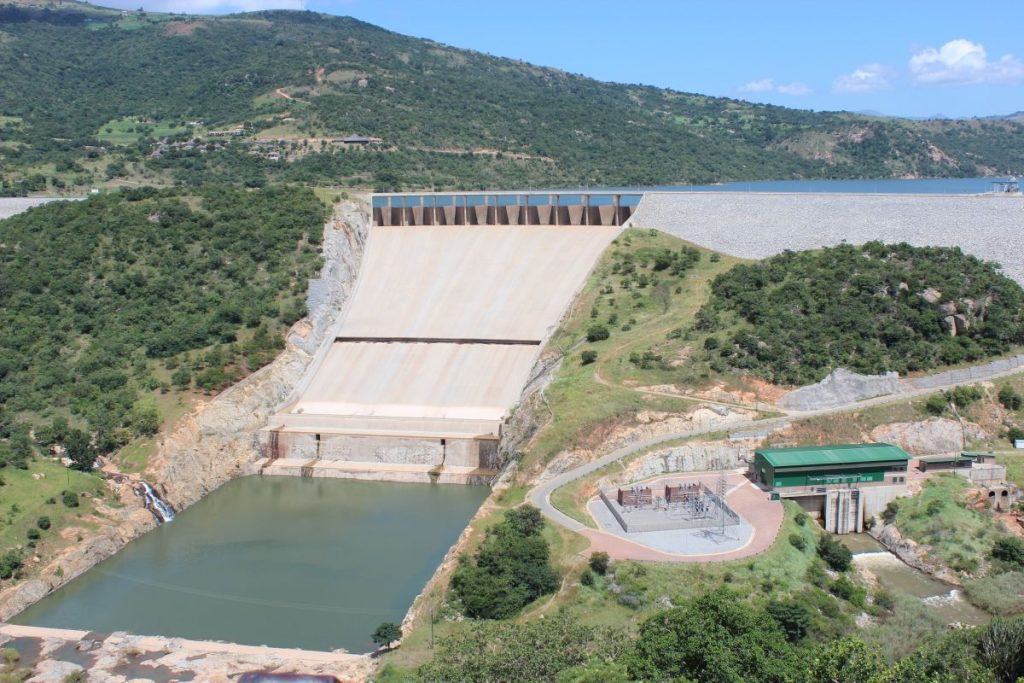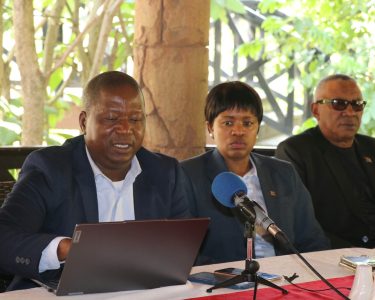
By Bahle Gama
The country seems to be well prepared for the outcome of the contract between Eswatini Electricity Company (EEC) and Eskom ending in 2025.
This has been made visible through the recently concluded procurement process of 75MW of Solar Photovoltaic (PV) and 40 MW of Biomass that will contribute to the country’s internal generation capacity.
A photovoltaic (PV) cell, commonly called a solar cell is a non-mechanical device that converts sunlight directly into electricity. Some PV cells can convert artificial light into electricity. Sunlight is composed of photons or particles of solar energy.
ALSO READ:Parents dump children at EEC…
These photons contain varying amounts of energy that correspond to the different wavelengths of the solar spectrum.
In 2023, Minister of Finance Neal Rijkenberg announced that the country was targeting at least 50 per cent of renewable energy in Eswatini’s electricity mix.
Rijkenberg stated that the country was planning several projects to add to the installed capacity that will contribute to the achievement of national security supply.
This was shortly after the Eswatini Energy Regulatory Authority (ESERA) had approved the implementation of the 75MW Solar PV, 13.6 MW Lower Maguga hydropower plant, 33MW Maguga expansion, and Lower Maguga Hydro power plants.
Eswatini is one of the leading countries in Southern Africa that has invested substantially in boosting access to electricity, with a national electrification of 83 per cent.
This has been deemed higher than the average for Africa which stood at 40 per cent in 2023. In 2020, Eswatini was ranked eighth in the Southern African region regarding access to clean fuels and technologies, with a score of 74.7 per cent.
On May 15, 2024, Minister of Natural Resources Prince Lonkhokhelo said the country is putting a special focus on renewable energy technologies because the government has seen a global push for countries to commit to reduced carbon emissions.
The Minister stated that the country is looking at ways to introduce bold targets towards renewable energy and beyond green technologies.
“As things stand, we are well on target to achieve our nationally determined contribution in terms of increasing renewable energy generation in the country,” he said.
EEC Managing Director (MD) Ernest Mkhonta said energy security has become a strategic imperative for businesses across the African continent.
Therefore, in Eswatini, this includes finding new ways to finance sustainable energy solutions, adding that it is imperative to strike a balance between energy transition to renewables and energy affordability for all emaSwati.
“Eswatini should consider how to finance base-load energy generation and the low-carbon energy projects required to achieve its development goals,” Mkhonta said.
The MD said this can be possible if all stakeholders could work well with the private sector and more banks supporting the government of Eswatini’s mandate by making energy financing accessible to ensure the successful implementation of generation expansion projects, “that will power Eswatini beyond 2025.”

One of the banks at the forefront of providing viable financial solutions and technical support for renewable energy and infrastructure projects in the country is Standard Bank.
This according to the bank’s Chief Executive Mvuselelo Fakudze is for sustainable and inclusive socioeconomic growth. Speaking during the 2024 Energy Indaba at Royal Villas, Fakudze said the Group has mobilised E300 billion for sustainable finance by the end of 2026, with a target that includes E50 billion of financing for renewable energy projects, including carbon trading and Export Credit Agency (ECA).
The Bank continues to lead the way in supporting national efforts for universal access to reliable, sustainable, and affordable electricity; whilst propelling the country towards net zero in terms of greenhouse gas emissions.
“The bank is committed to supporting its long-standing clients across the sectors of the economy in ensuring that they meet their energy needs.
The bank is moving full steam ahead in ensuring the success of renewable energy projects for dispatchable power, whilst playing a leading role in delivering renewable power to the grid and supporting Eswatini’s drive to energy security,” said Fakudze.
ALSO READ:Parents dump children at EEC…
During the Indaba, it was discussed how the country can reduce its over-reliance on electricity imports towards sustainable energy, creating new jobs and technical expertise in the sector.
Eswatini currently imports about 70 per cent of its electricity from Eskom, Mozambique’s EDM, and the Southern African Power Pool (SAPP). However, through the additional local generation of power, the country could redirect the several significant amounts it currently pays to Eskom, to be spent on development projects within the country.
The Standard Bank CE said they can leverage the bank’s in-depth industry knowledge and expertise to design and implement innovative financing solutions within areas of energy production and efficiency.
“Standard Bank is a leader in renewable energy projects, and we are actively financing energy projects across Southern Africa, including renewables such as solar and wind energy, and waste-to-energy projects,” Fakudze said.

Standard Bank, which boasts 160 years of experience in the financial services sector across Africa and elsewhere, and is the biggest bank by assets, is uniquely positioned to assist businesses, and joint venture entities involving emaSwati, to access its innovative financial solutions for climate-smart projects.
These, in the main, are projects that support a just energy transition towards a green economy, reduction of carbon emissions, an increase in climate resilience, and enhanced socio-economic development.
Worth noting is that the EEC has observed the growing appetite of customers installing their embedded generators to curb the costs incurred in purchasing electricity.
As a result, EEC and ESERA initiated a Small-Scale Embedded Generator (SSEG) pilot project. This is an embedded generator unit embedded within the distribution network and located on the customer side for its use.
The project is a typical case policy promoting technology aimed to operationalise the SSEG framework developed in 2021 by assessing the proposed compliance guidelines on existing sites to ensure installations are safe, compliant, and aligned with the country’s goals.
ALSO READ:EEC presents E930,000 CSI partnership…
“The project selected six sites, mostly irrigation with solar PV technology with plant capacities ranging from 140 kW to 130 kW, and evaluated their compliance with SSEG framework guidelines and standards,” said EEC.
This process according to EEC is necessary to gather lessons before a national roll-out which will enable SSEG installations across the country as well as enabling them to export to the grid.
However, the initial generators are still trying to comply with the technical requirements, and EEC is looking to register all other generators for awareness of the requirements and can start preparing themselves for full-scale SSEG compliance.






